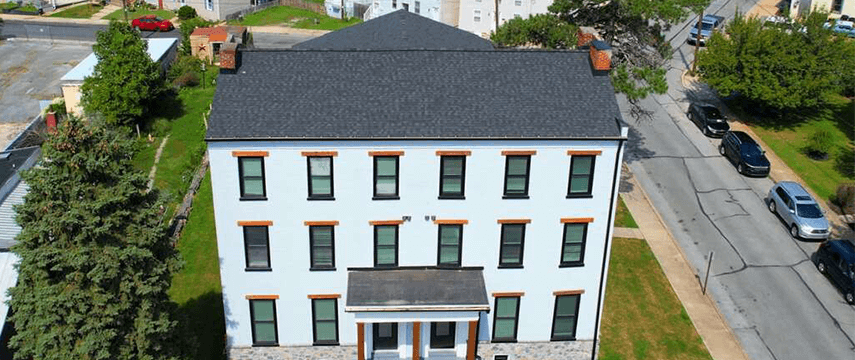For some things, “out of sight, out of mind” is a great mindset. Unfortunately, roofs are not one of them. If you forget about your roof until you start noticing problems, it may already be too late. As a business owner, here are the top six commercial roof replacement signs you need to know to keep your operations running smoothly all year long.
Types of Commercial Roofing Materials
Commercial roofs are split into two categories: flat or sloped. Flat roofs are the most common for businesses because they offer more space, easier maintenance, and easier access. Traditional sloped roofs, on the other hand, are more common with residential properties.
Your commercial roofing lifespan depends on the material of your roof. Below are the average lifespans of the most popular options:
- Built-Up Roofing (BUR): up to 20 years
- Modified Bitumen (MB): up to 20 years
- Asphalt Shingles: 20–30 years
- TPO: 20–30 years
- PVC: up to 30 years
- EPDM: 40+ years
- SPF: up to 50 years
- Metal: 50+ years
Signs it’s Time for a Commercial Roof Replacement
Is your roof growing old? Check out these signs your commercial roof needs replacement. And when you’re ready, give KSW a call.
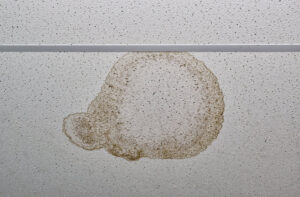
Frequent Leaks
Recurring leaks equals a failing roof system. If you’re dealing with constant moisture issues, then that’s a sign your roof isn’t doing its job. A replacement will protect your property and employees, keep your business running smoothly, and save you the hassle of dealing with leaks.
Water damage in commercial roofs isn’t always as obvious as dripping water. You can also spot it in stains or discoloration on your walls and ceiling. In addition, keep an eye (and nose) out for mold growth and musty smells. These are all signs you have a leak and need to get that fixed right away.
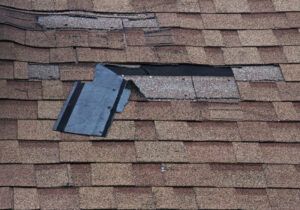
Visible Damage
Another sign that it’s time for a commercial roof replacement is structural issues like cracks, sagging, or uneven surfaces. This can also show up in damage to the materials such as cracked tiles, missing shingles, or holes in the membrane. If you notice broken flashing, that’s an indication you need repairs.
A major concern with membrane roofs is blistering. If air or moisture gets between the layers, a bubble will form. This is most common in areas with extreme temperature fluctuations. If these blisters don’t get repaired, it can seriously damage your roof.
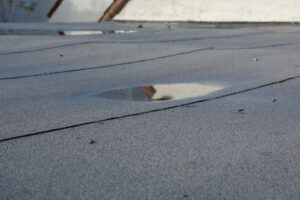
Standing Water
Standing water is a flat roof’s worst nightmare. To avoid this common flat roof issue, most actually have a slight slope to allow rain to drain off. But if you notice water is just sitting for several days, that means you have a drainage problem. This can be caused by clogged gutters and downspouts, compressed insulation, or poor installation that keeps water trapped.
As water pools on your roof, it can impact its structural integrity. It may start attracting insects and plant growth, cause sun damage or cracks in your roofing material, or even make your roof sag due to the weight of the water. Eventually, this moisture will make its way inside. Water damage in commercial roofs is serious and needs to be addressed immediately.
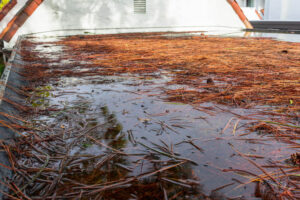
Severe Weather
After heavy rain, snow, or hail, it’s always best practice to get your roof inspected by a professional. Roof storm damage is no joke. EPDM rubber roofs especially can get punctured in a storm. Rips to the membrane mean it’s no longer watertight, which can lead to major leaks.
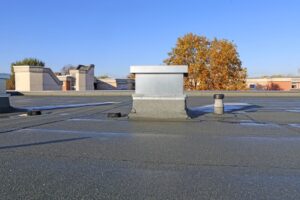
Increased Energy Bills
A failing roof can impact your building’s efficiency, leading to higher energy bills. If you notice a spike in your monthly payments, you should check out your roof. Many things can increase your bills, not just your roof, but it’s always best practice to give it a once-over and make sure everything looks okay.
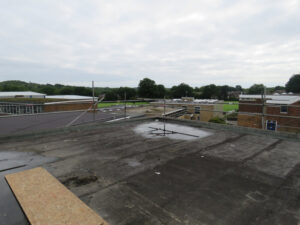
Old Age
The commercial roofing lifespan for materials varies, but nothing lasts forever. At some point, old age kicks in and roofs fail. The older they get, the more likely they are to have problems. If your roof is reaching the end of its lifespan, it’s probably time for a commercial roof replacement. It’s better to get ahead of the problem than wait until your roof fails.
How to Make Your Roof Last Longer
Wondering how to combat this damage and stave off the effects of a roof’s old age? The best way to make your roof last longer is to perform frequent inspections and keep up with commercial roofing maintenance.
Let’s start with inspections. It’s best to get your roof checked by a professional twice a year. This is usually done in the spring and fall so it’s easier to make repairs if needed. The inspector will check for signs of leaks, look at the structural integrity of the roof, and analyze any potential hazards (rust, loose fasteners, etc.)
In addition, you should also be performing regular commercial roofing maintenance. This includes checking your roof yourself for signs of visible damage or broken flashing. You should also remove all debris from the surface and keep your gutters clean to allow water to drain. Trim back trees and make repairs as soon as you can, so issues don’t pile up.
It’s a good idea to limit rooftop traffic to prevent unnecessary wear and tear. For extra security, you can also apply a protective coating to extend its lifespan and make it less susceptible to damage.
Commercial Roof Replacement with KSW
Is your business ready for a new roof? No matter your roofing system, our certified team of technicians is here to help. We will visit your property, scope out the project, and give you a free estimate. We’re experts in:
- EPDM rubber
- Shingles
- Standing seam metal
- And more

